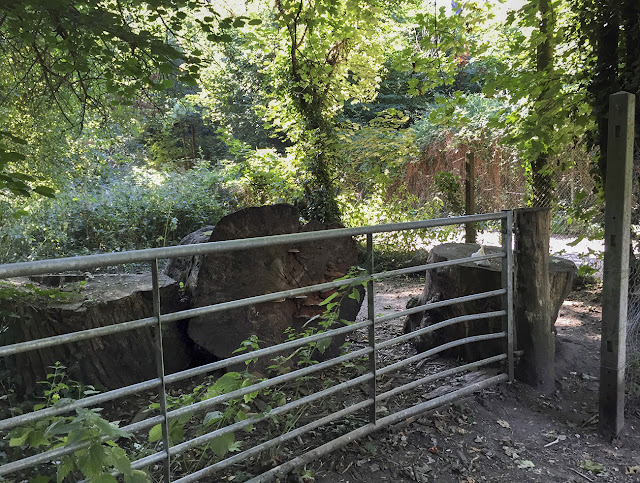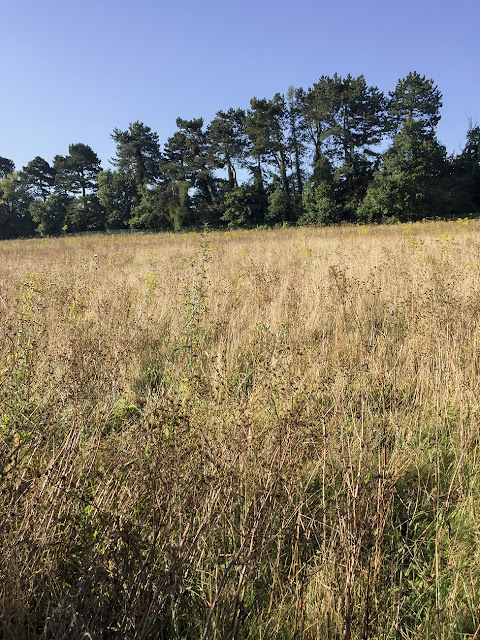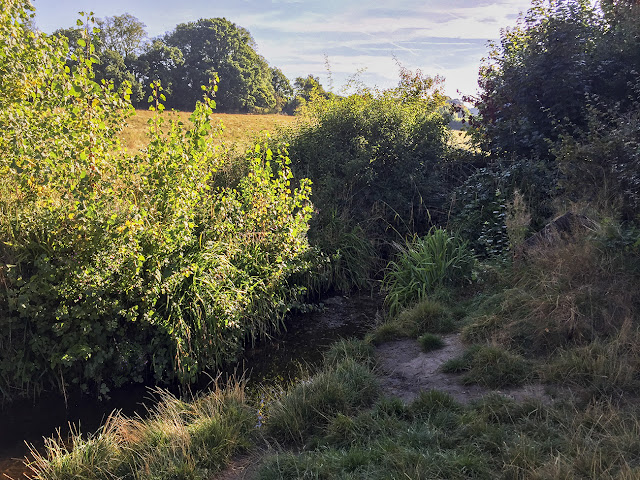 |
| Gosshill Road. Walk round the Hawkwood Estate 01, 30 August 2016. |
I'm going to show a walk around the Hawkwood Estate, taking in one edge of Petts Wood, in the same style as the
Walk to Nash I posted in June. That is, a sequence of iPhone photos of the route. This time I will also include some closeups taken with my EOS 5DS. As I am at least partly a botanist, I could not resist some photos of plants.
There are more than 40 photos this time, so I will post in 3 sections. iPhone photos are numbered. The others just slot in.
The quiet road in the first photo, Gosshill Road, is where a car can be parked. Mine is on the right.
 |
| Walk round the Hawkwood Estate 02, 30 August 2016. |
To start the route, I went through this narrow gap. There's a plastic bag of dog poo on the stump which added its characteristic aroma to the scene. (This bag is not an essential part of this walk.)
The face of the felled trunk has some interesting fungi. That day, they were covered with released spores that looked like brown dust. In wet weather, with the spores washed off, you can see the odd shine on the top surfaces, and the yellow edge, that tell you it's Ganoderma pfeifferi, Beeswax Bracket. Here is what it looked like when I was there in 2013:
 |
| Ganoderma pfeifferi, Beeswax Bracket. 22 December 2013. |
Soon it became less ... well, doggy ... and I was walking through what looks like a neglected orchard.
 |
| Walk round the Hawkwood Estate 03, 30 August 2016. |
The sun shone, all was lovely. Past the small orchard ...
 |
| Walk round the Hawkwood Estate 04, 30 August 2016. |
To the right was what looked like a field ready to be harvested for hay. The trees mask a busy railway. But if this is really for hay, the harvester needs to be careful.
 |
| Ragwort, Senecio jacobaea, on the Hawkwood Estate, 30 August 2016 |
There's a lot of Ragwort in the field. This plant is poisonous and can harm horses and cows. They don't eat it in the field because it tastes bitter, but apparently it loses this bitterness when dried in hay and so becomes dangerous.
 |
| The Kyd Brook. Walk round the Hawkwood Estate 05, 30 August 2016. |
To the left is a small, quiet, well-shaded stream, the Kyd Brook. The Kyd Brook runs on towards London and becomes the River Quaggy, which then joins the Ravensbourne by Lewisham station. The Ravensbourne runs on into the Thames.
 |
| The Kyd Brook. Walk round the Hawkwood Estate 06, 30 August 2016. |
This is the Kyd Brook looking upstream, in the direction of the walk.
I have been along this route in wet weather and the path along here was little more than a series of muddy puddles. The weather has been dry recently, so the walk was much more pleasurable.
 |
| Bristly Oxtongue, Helminthotheca echioides. Walk round the Hawkwood Estate 07, 30 August 2016. |
These large yellow-flowered plants in the field to the right are Bristly Oxtongue. I don't know how palatable they are, but they are not poisonous.
 |
| Mugwort, Artemisia vulgaris. Walk round the Hawkwood Estate 08, 30 August 2016. |
To the left of the path, Mugwort is still in flower. This is a relative of wormwood, the plant that supposedly drives people mad when used in absinthe. But for this plant, my reference book (*) says "The leaves and flowering tops are used as a spice" if gathered when the flowers are still immature.
The flowers are small, and look like this:
 |
| Flowers of Mugwort, Artemisia vulgaris. Hawkwood Estate, 30 August 2016. |
More to follow next time ...
(*) "Plants Consumed by Man" by B. Brouk. Academic Press, London, 1975. ISBN 0-12-136450 X.











I really appreciate your support on this.
ReplyDeleteLook forward to hearing from you soon.
I’m happy to answer your questions, if you have any.
แจกเครดิตฟรี ฝากถอนง่าย
เครดิตฟรี
เครดิตฟรี